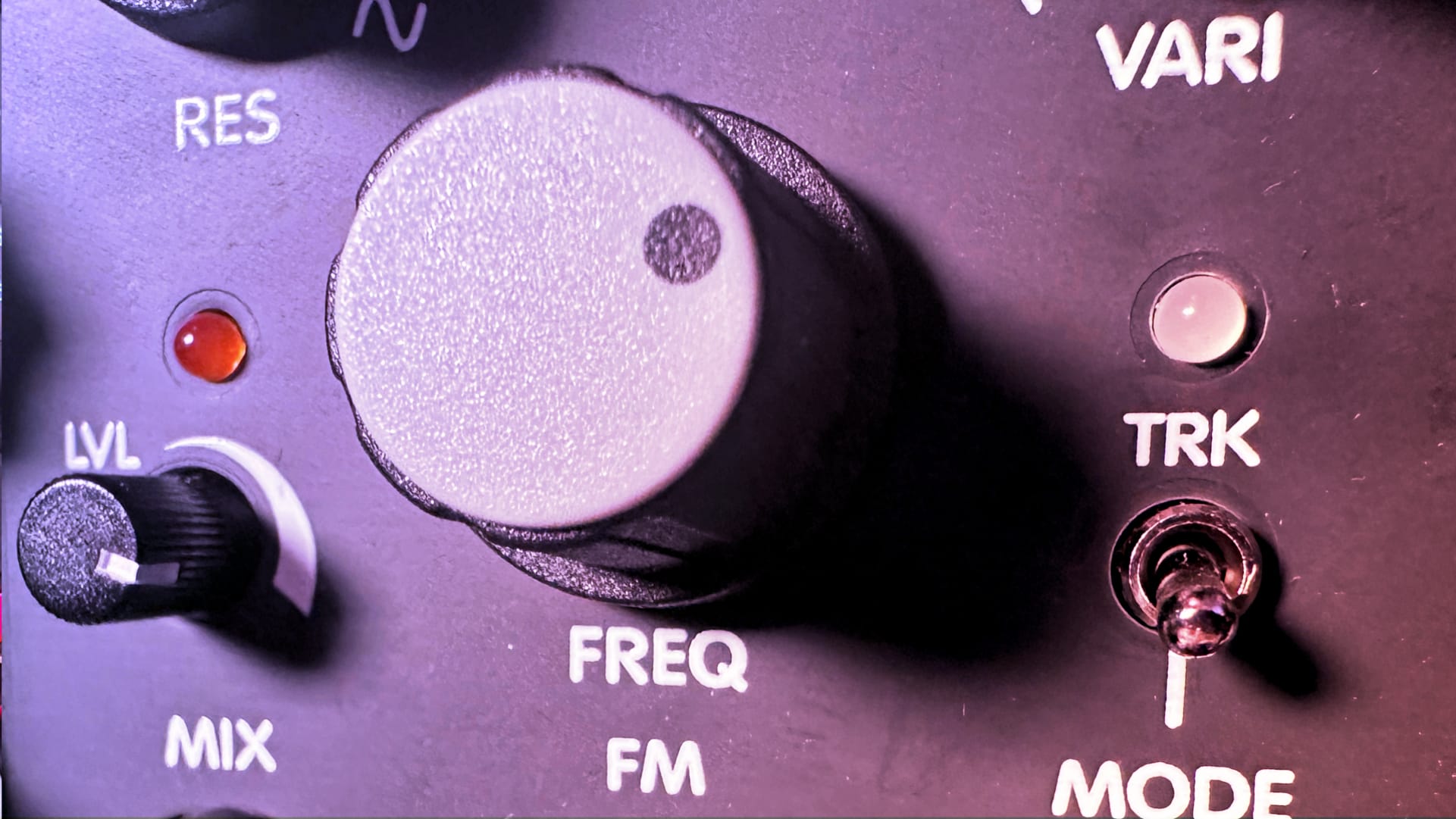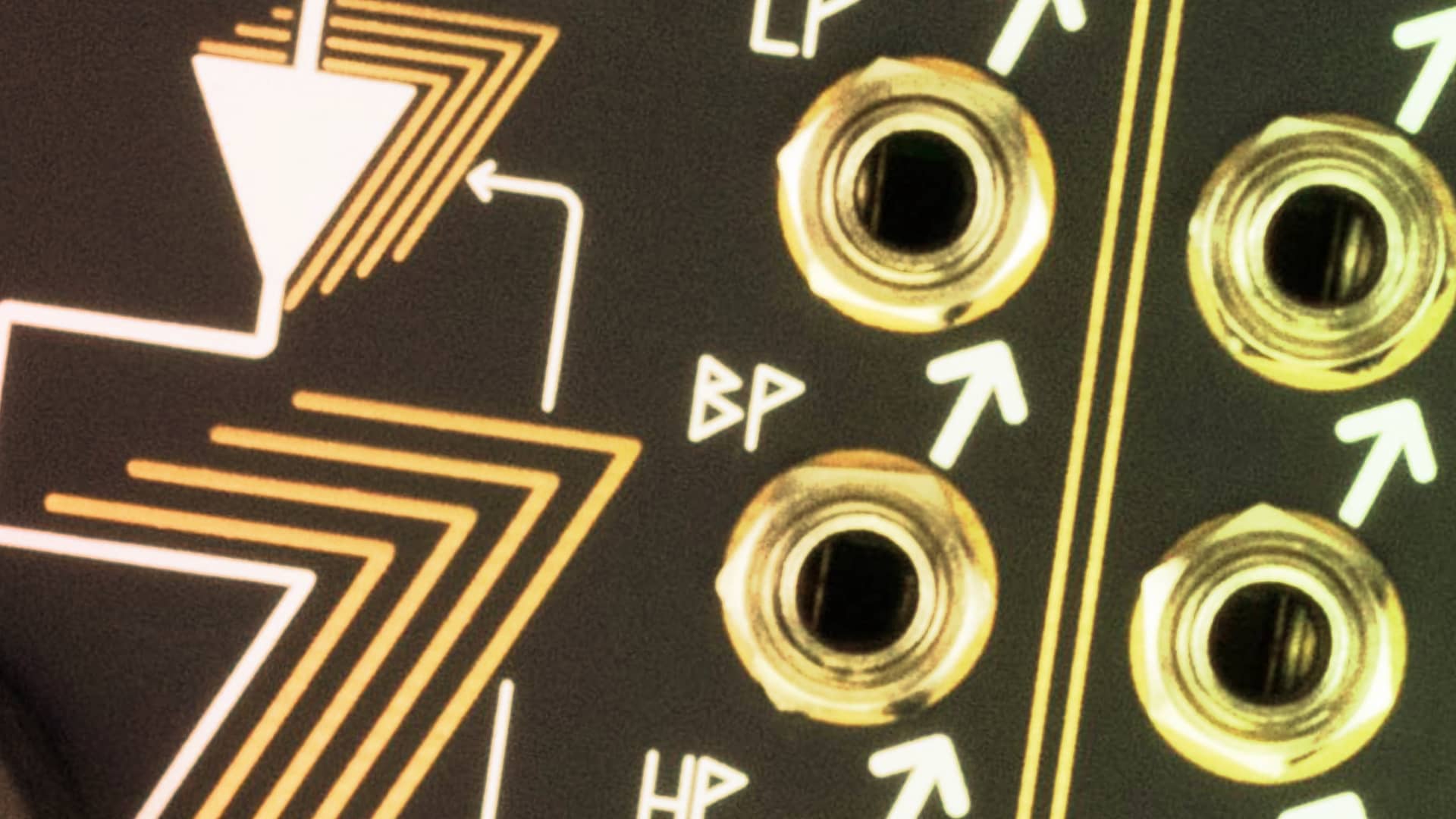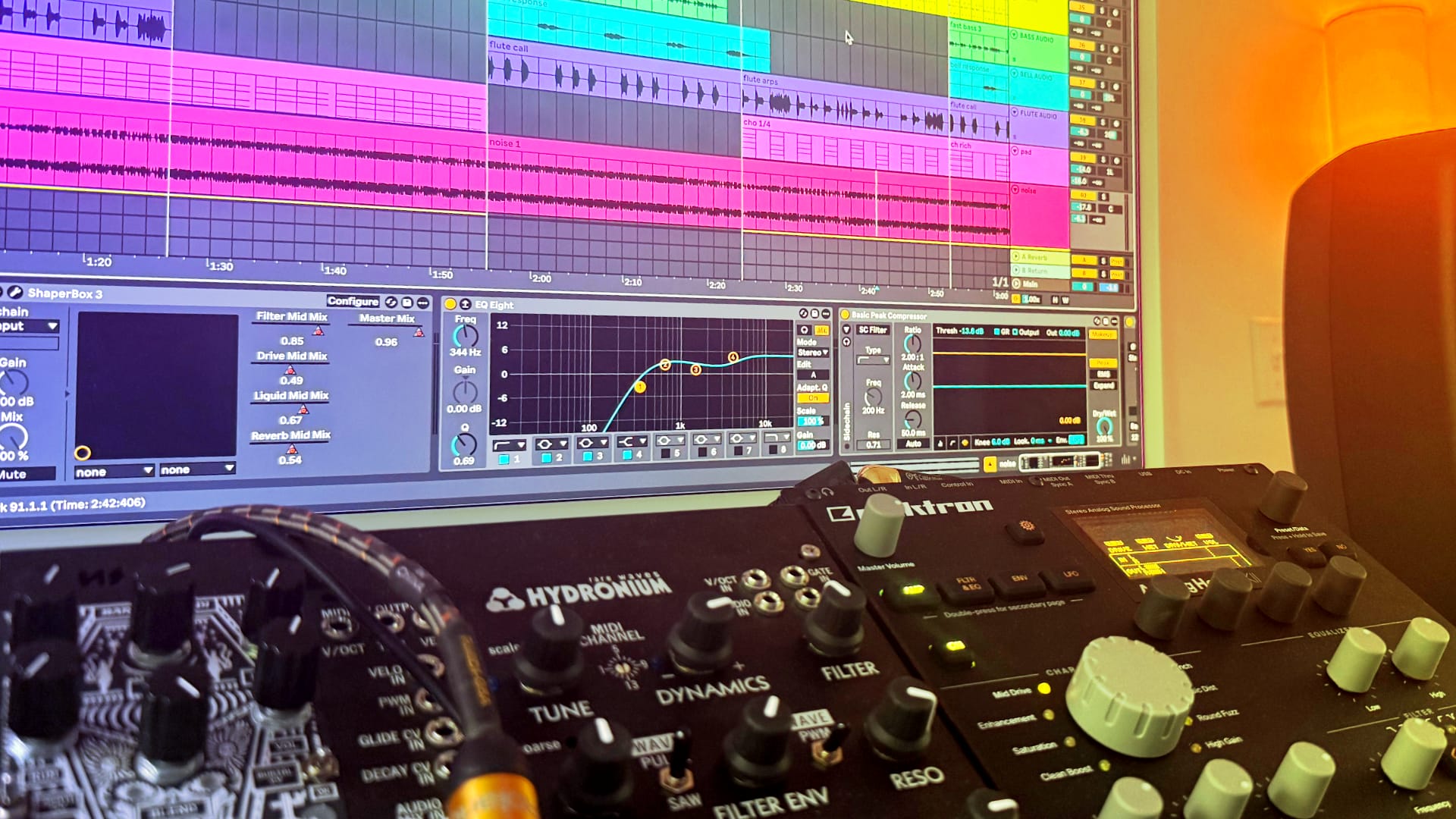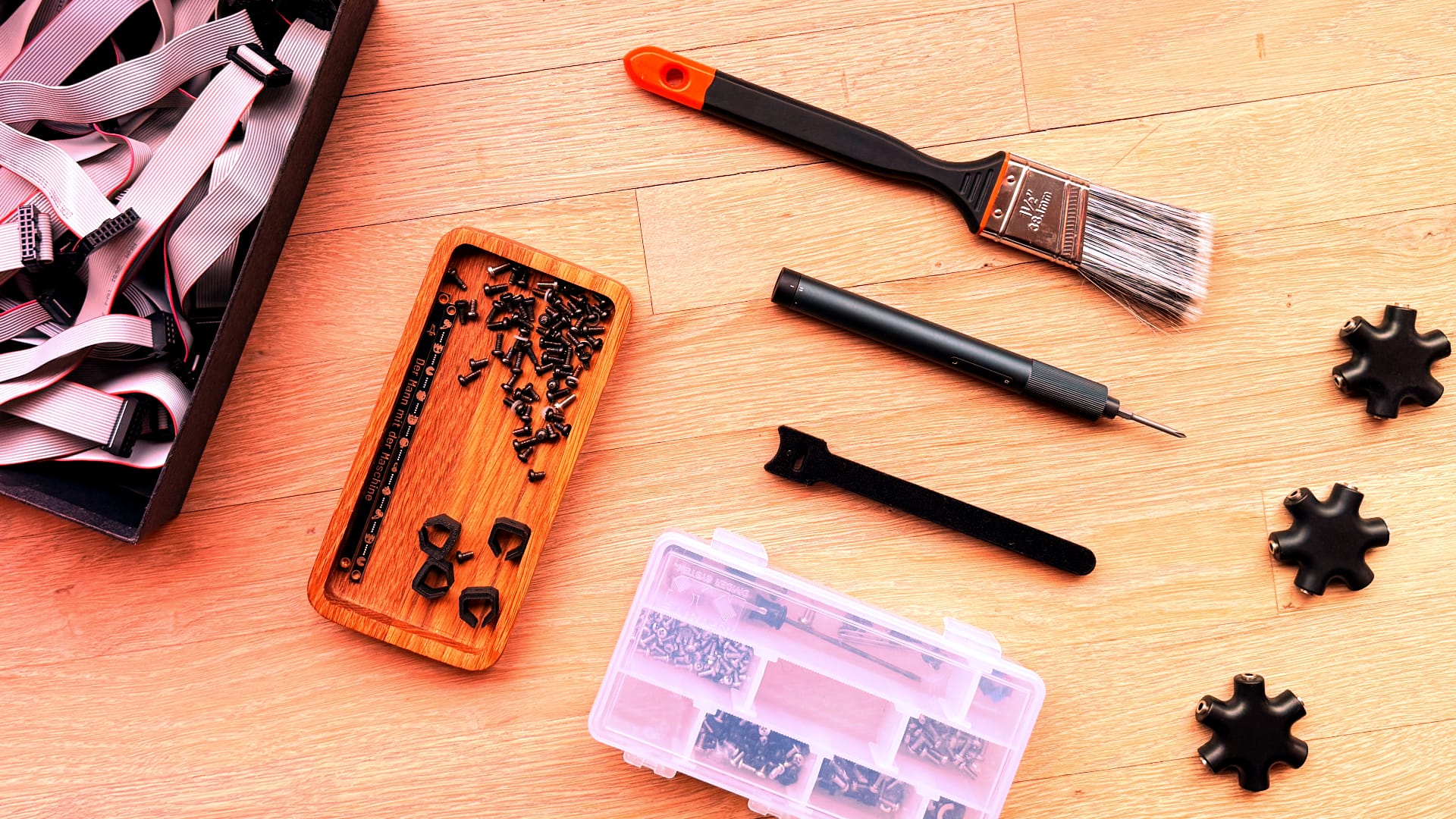Every now and then, I’ll chat with another synth enthusiast who mentions they don’t use filters much. These folks often lean towards west-coast synthesis and aren’t big on subtractive synthesis. I’ve noticed that they sometimes underestimate the versatility of filters, thinking they’re just for EQ or the standard subtractive patch. In this post, I want to highlight some less common uses for filters, but first, let’s explore a few potentially overlooked filter behaviors.
Control Input Levels
Did you know that many oscillators output at levels that can clip or overdrive filter inputs? That’s right, the saw wave you’re sending into your filter might have its top and bottom chopped off due to overdriving. While this can be a desirable effect for adding distortion, there are times when you might want to filter the source without distortion. If your filter lacks a level control on the input, you can use an attenuator to reduce the input source’s amplitude.
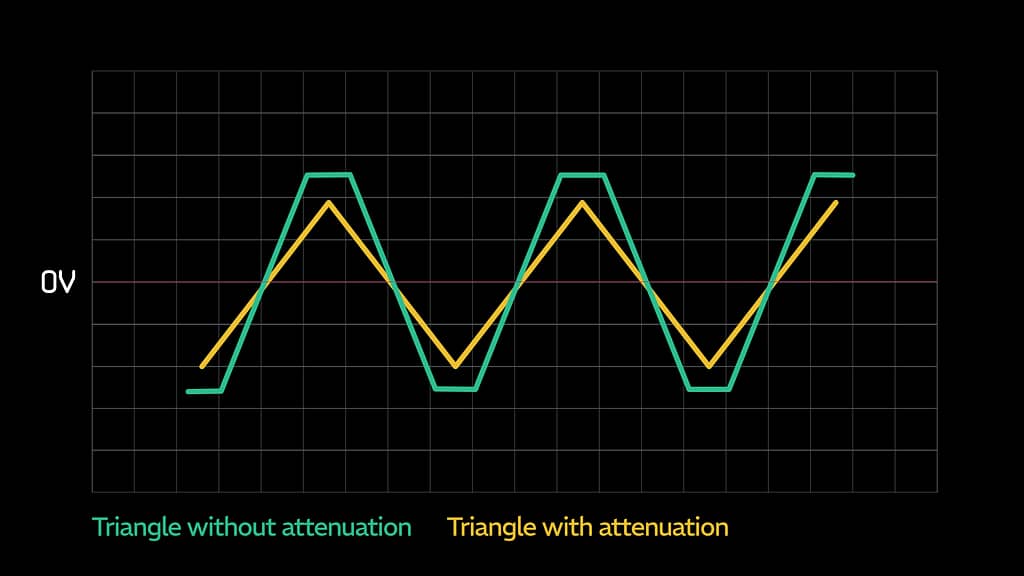
Exploring the FM Input
Surprisingly, many experienced synthesists often only use one of the filter’s FM inputs, typically for envelope modulation. But did you know that both the frequency and FM inputs are essentially the same? While the main frequency input may be more specifically calibrated for pitch CV, both inputs are designed to modulate the frequency. Starting with a fairly standard subtractive patch here are some creative uses for the unused FM input:
- Use the main frequency input for keyboard tracking.
- Add texture by sending noise to the FM input.
- Create more movement with an LFO.
- Introduce FM and throaty sounds by sending another audio-rate oscillator.
- Add rhythmic accents by sending gates.

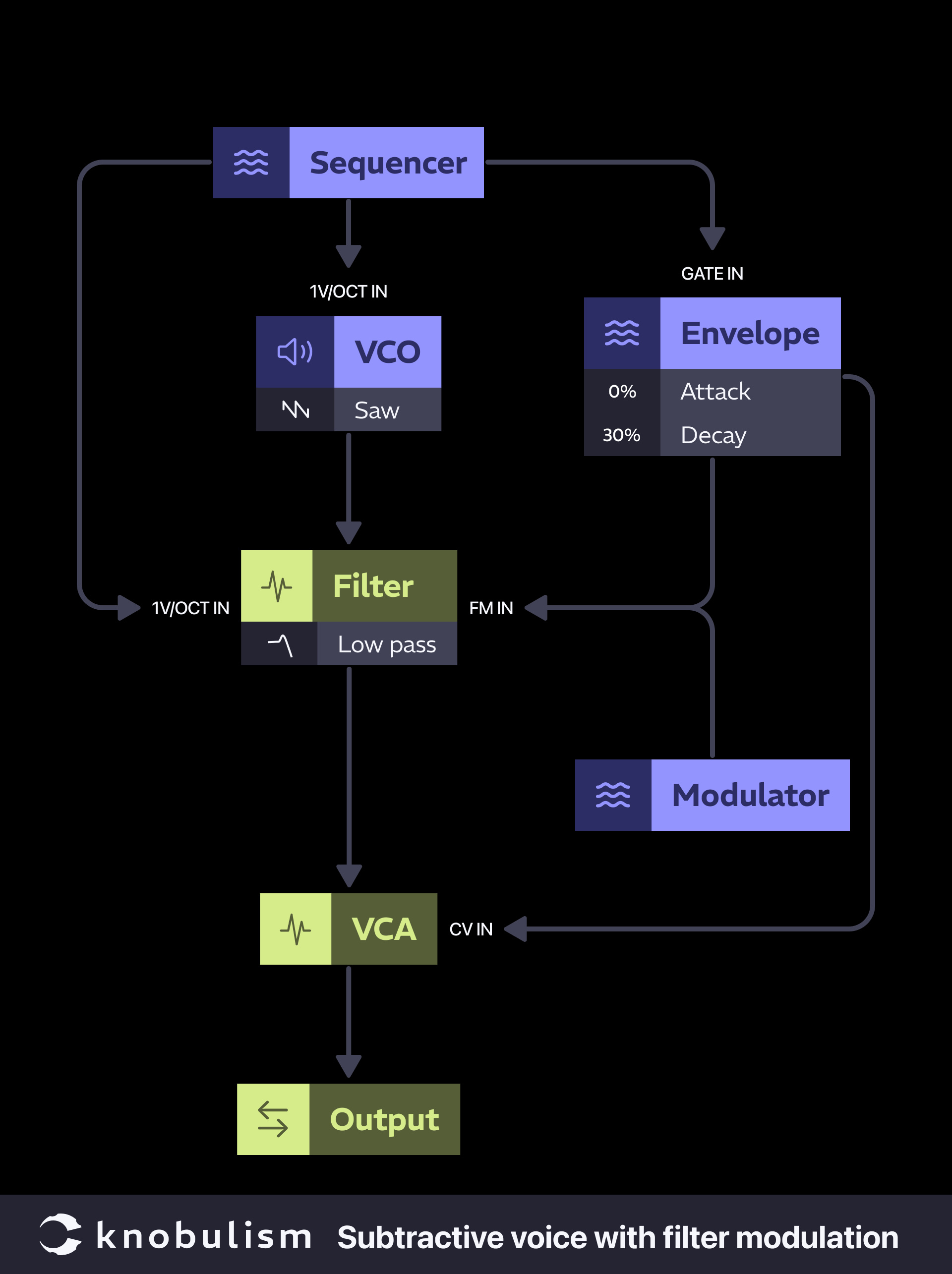
From now on, I think you might find yourself patching modulation to both FM inputs. But what if you need a third or fourth FM input? Simply use a mixer to combine your CV sources before sending them to the FM input. Most mixers also allow you to control the level of the sources, enabling you to balance them before modulation.
The remainder of patches below are less common.
Turning LP into HP (and Vice Versa)
If you ever need a high-pass filter but only have a low-pass filter available, you can easily convert the LPF into a HPF. Duplicate the original signal, sending one to the filter and the other to an inverter and then a mixer. Mix the output of the filter and the inverted signal to create your HPF output. Fool around with the frequency to hear the results. By adjusting the mixer levels, you can fine tune the phase cancellation, which is how the HPF is created.
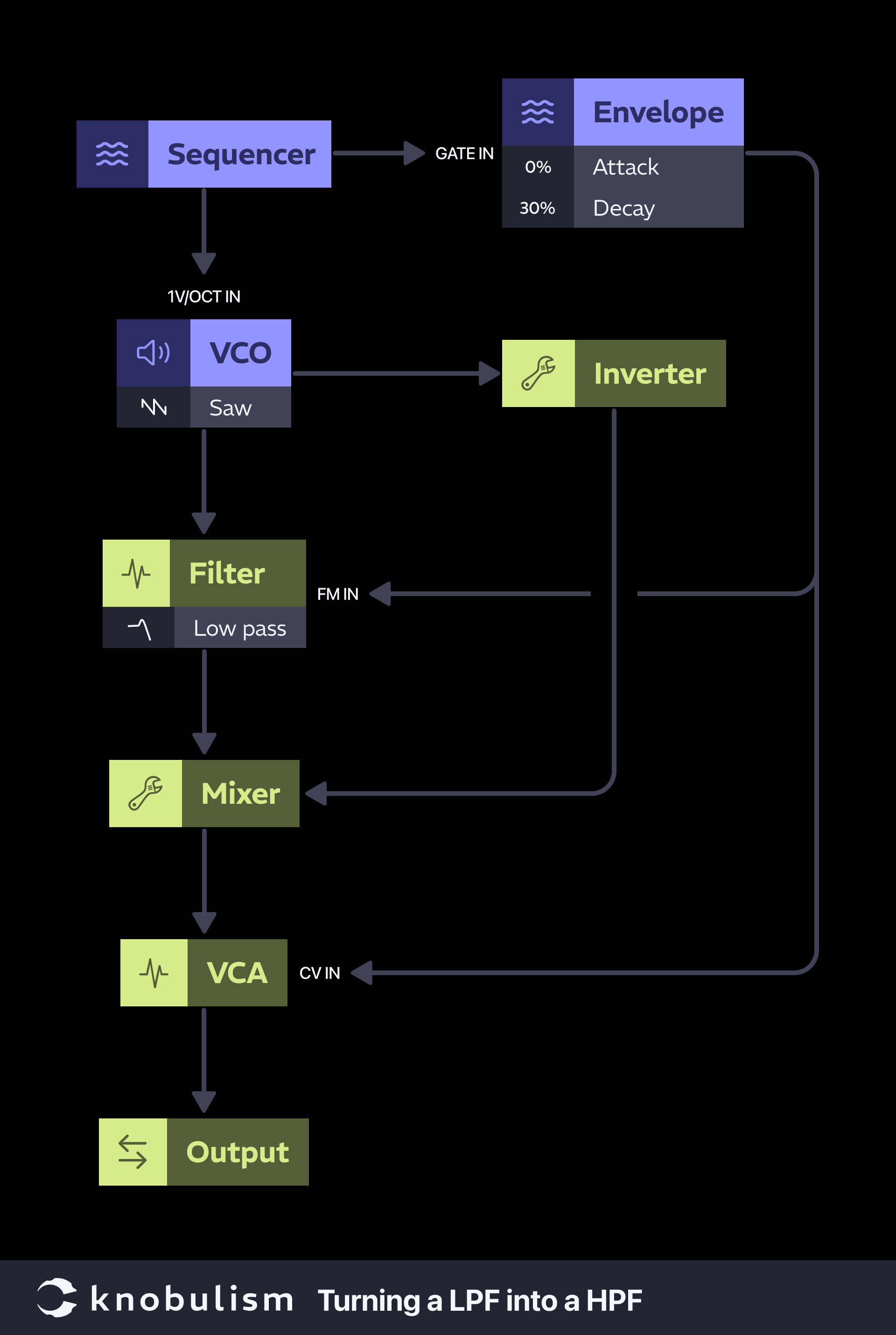
Filters as Kludgy Slews
Many Eurorack filters can accept control voltage as easily as audio, even though they’re not designed for it. When sending pitch CV through a filter, don’t expect it to sound perfectly in tune. Filters can round off CV edges but aren’t designed to maintain voltage levels consistently. Even with a fully open filter, some minor filtering may occur, especially with pitch CV, causing perceptible pitch changes. With that in mind try sending pitch CV to a filter and adjusting the frequency to get some glide on your sound. Also, try sending a random stepped signal to the filter and the output to another parameter to get smooth random modulation. To monitor this send the output CV to a VCO 1v/oct in, that is the easiest way to quickly understand the results. The patch in simple for this one SOURCE CV > LPF > VCO 1V/OCT IN > OUTPUT
Filter as an Oscillator
A highly resonant filter with no input can self-oscillate, producing a fairly pure sine wave. Since most filters track 1/v octave, you can use a resonant filter as an oscillator. A great application for this is to use it as an FM modulator, saving you from buying an additional oscillator. Try this patch out with your filter oscillator (the modulator) tuned up a fifth from the source oscillator (the carrier) and track both with the same pitch cv.
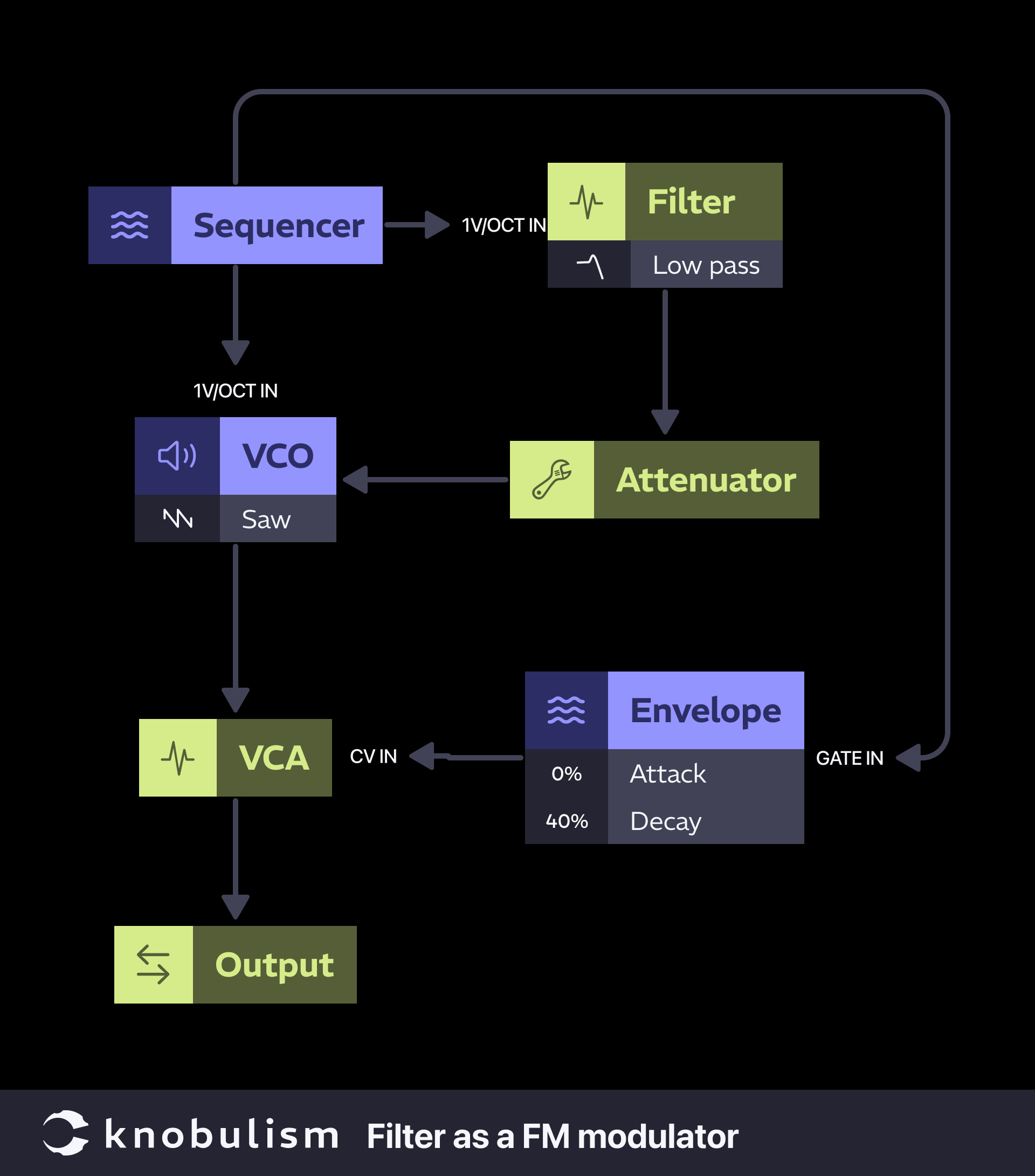
Resonance on Less-Resonant Filters
Some filters may not oscillate, but by creating a feedback loop, you can increase the resonance enough to cause self-oscillation. Route one of the filter’s outputs to an attenuator and then back into the input, and use it to control the resonance level. If you notice that this is not achieving the results you expect, meaning you are not hearing the the filter self-resonate, that may be due to a phase inversion. Some filter flip the phase of the waveform, so if that is sent back in to the input, you may get a quieter result. The solution is simple, invert the output again to bring it back in phase with the input.

Ping a Filter
Another trick with resonance is to bring a filter close to self-oscillation, then send a gate or trigger to the input. Adjust the resonance amount to control the decay, similar to an envelope. For water droplet-like sounds, try sending relatively fast random gates. Next, patch a sample and hold into an FM input, being mindful of the voltage amplitude and using attenuation if desired. Experiment with adjusting the speed, frequency, and amplitude of the sample and hold to achieve different effects.
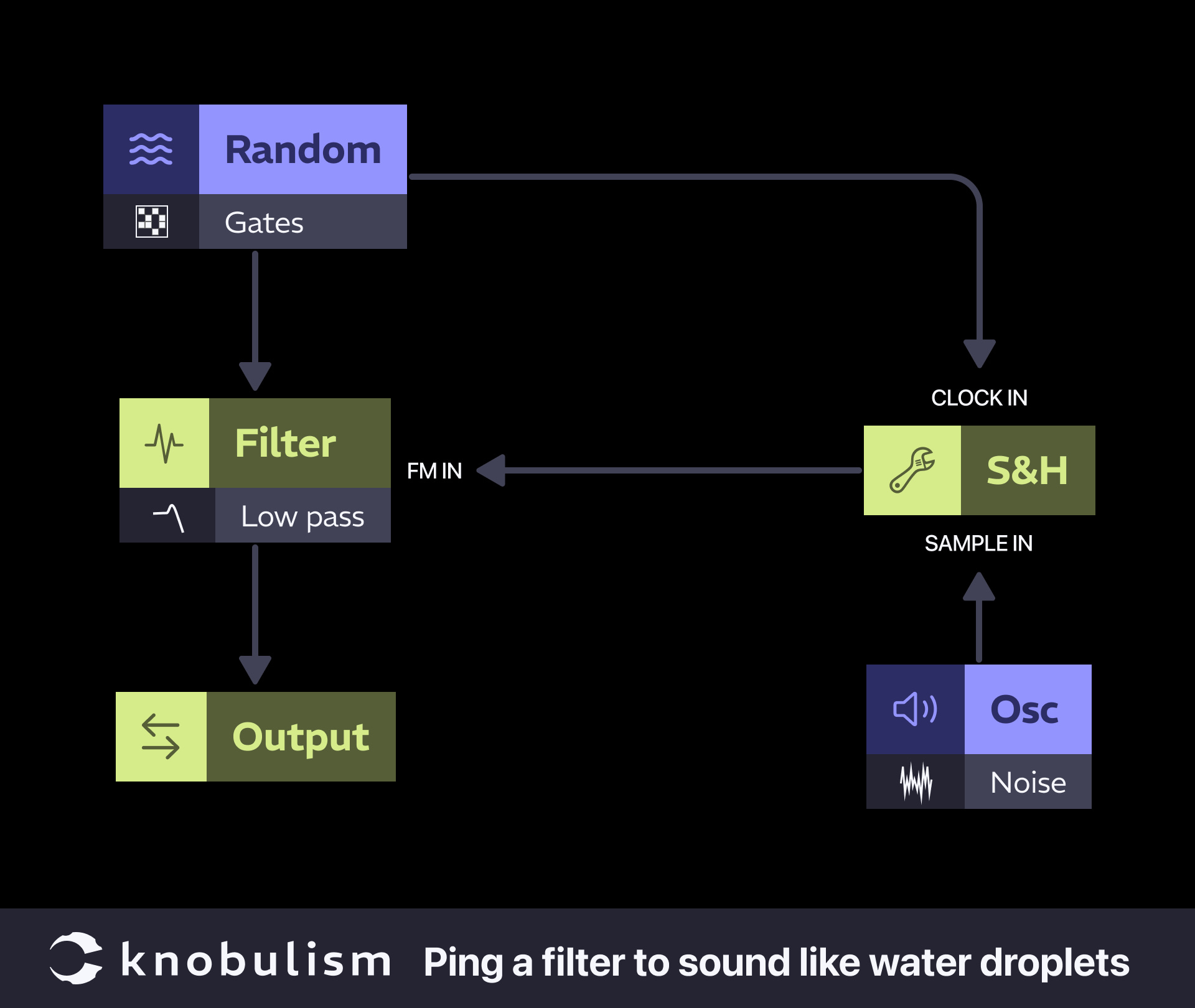
Filter as a Drum Module
Pinging a filter is the first step to turning it into a full-fledged drum module. Start by pinging the filter with a gate rhythm that you find pleasing. Now, try multing that gate and sending it to a decay or AD envelope. Set the attack to as short as possible and the decay very short, just a touch beyond its shortest time. Output this envelope into an FM input, with an attenuator. Once you do this, it should give you a fast pitch drop that simulates the transient of a drum stick or hand hitting a drum, basically a stronger click noise.
To add more depth to your drum sounds, consider adding some white or blue noise to the other FM input, of course with an attenuator, so you can adjust the amount. By experimenting with the envelope decay length, the frequency, and the amount of noise, you should be able to create a wide range of drum sounds, from snares to kicks, toms, and timpani.

Using a Filter as a Resonator
For a fun experiment, use a sample as the source sound, such as a drum loop. Bring the filter close to self-oscillation and use the resonance to control the tone’s length. This can give tonality to your source material, allowing you to tune a drum loop or even a sequenced melody.

While this list doesn’t cover all the filter’s capabilities, I hope it inspires you to explore new ways to use filters in your patches. Filters are a fundamental part of most synthesizers, often credited with defining a synth’s unique “sound”. Even though some of these applications are less common, a good old filter sweep can still be incredibly enjoyable. Have fun experimenting with these patches and share your ideas or sounds in the comments below.

